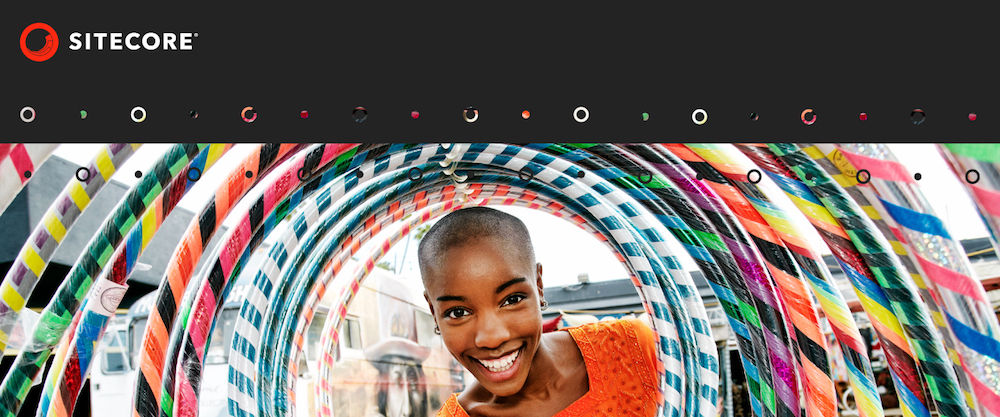Connect with execs from The New York Times, TIME, Dotdash Meredith and many more
Brands are rethinking content strategies to make personalization pay off

When it comes to providing a differentiated customer experience, content is king; customers will not hesitate to switch to a competitor if they aren’t engaged by the information that matters most to them.
Top performing brands know that they need to provide the personalized, relevant information their customers need at every point along their journey — from initial contact through to purchase, as well as after the sale, to ensure satisfaction and nurture loyalty. But what’s the most effective, simple way of achieving this?
To solve this challenge, marketers must develop a content strategy that considers personalization from the outset, meets the demands of more customer segments and an ever-growing number of digital channels, and is set up for continuous improvement and optimization. Those three steps play into advertisers’ playbooks in the following ways.
Demonstrating an understanding of personalization
Content is only effective if it directly speaks to the specific needs of an audience. According to the B2B buyer survey data from Demand Gen Report, almost two-thirds of respondents cite easy-to-consume informational content as a differentiator for winning vendors. At the same time, 61 percent also say that winning vendors are the ones that provide high-quality content.
However, research has shown that B2B buyers say companies often provide too much material that is either useless or lacks substance. At the heart of the matter, the issue becomes clear: Marketers spend too much of their time creating content that prioritizes their own sales or promotional messages over their customers’ informational needs.
This underscores the importance of organizations really understanding their customers. What are their goals, and what pain points are standing in the way? Also, where do they consume content? Taking the time to identify what makes customers tick makes it far simpler to produce targeted, highly relevant content that speaks to them directly, as well as ensure they receive it when they need it.
Keeping up with the content demand
Producing content is already a challenge, but personalization can add another layer of complexity. As content efforts expand to reach a greater number of customer segments across more channels — and development timelines shorten to keep pace with real-time market demands — it’s easy to see why many marketers are dealing with a content crisis.
Although the challenge’s scale is undeniably large, keeping pace with the volume and velocity of a content program that’s aligned to every customer’s needs is hardly out of reach. Many marketing teams still operate in surprisingly siloed ways, however, with a multitude of disparate tools that aren’t built for the demands of omnichannel personalization. As a solution to that challenge, investing in a fit-for-purpose platform that provides for centralized content planning, collaboration, creation, management and re-use enables them to create a more efficient, streamlined content operation that can save both time and money.
Keep improving with data analysis
No matter how good marketers think their content is, there are always ways to make it more targeted, more relatable and more relevant.
First, teams must ensure they’re not lured into the trap of thinking that more content equals more engagement. Research from Beckon shows that 5 percent of branded content generates 90 percent of audience engagement — and the other 95 percent shares the remaining 10 percent of engagement. When advertisers identify the 5 percent that is working — and why — then they can focus their energy on those vital instances.
The most effective way to find out what worked and what didn’t is directly from the brand’s customers. They can identify what influenced them to make their decisions and what they thought of the marketing experience overall. But, teams can’t discount the valuable insights available from each campaign’s data; it can be essential for mapping out future content plans. It’s very important not to think of this analysis stage as an afterthought. Without the insights that result, it’s hard to form more accurate, relevant content plans for existing and new audiences.
Time to evolve: ROI is the outcome of a strong marketing playbook
In the past, a traditional CMS often could fulfill marketers’ requirements to handle one or a small handful of channels. But times have changed, and the explosion of digital channels and devices — from websites, mobile applications and email to voice assistants, IoT devices like smartwatches and even augmented and virtual reality — requires a cutting edge solution that recognizes the omnichannel nature of content. And, since effective personalization can lead to a 20x ROI, it’s important to get this right. The three above steps in the marketing team’s playbook — personalization, meeting demand and driving next steps with data and analysis — are the pathways to similar revenue-boosting results.
For more information on how brands can differentiate themselves from the competition through superior digital experiences, download Sitecore’s Pocket Guide to Connected Content Lifecycle here.
More from Digiday

WTF is ‘Google Zero’?
The era of “Google Zero” — industry shorthand for a world where Google keeps users inside its own walls — is here.

‘Walt Disney is not Mickey Mouse’: The modern creator career path, from full-time to founder
The business of being a creator isn’t a solo show. They have become full-on productions.

Retail media meets publishing: News UK, Future and Ocado tap clean room tech for smarter data targeting
News UK, The Independent, Immediate Media and Future are teaming up with retail media network Ocado to test clean room-powered data matching.





